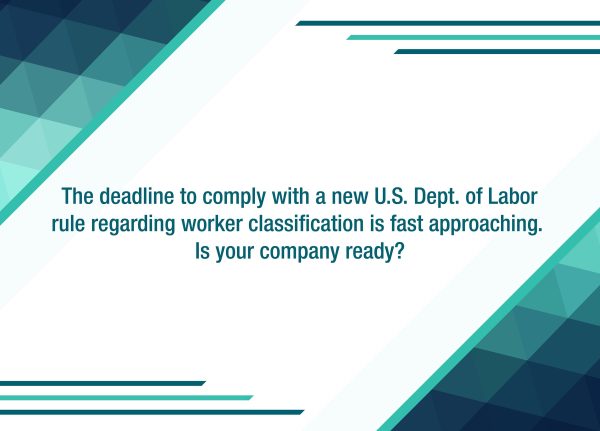The IRS recently finalized regulations that substantially expand mandatory electronic filing (e-filing) of certain information returns. The regulations were proposed in 2021 to implement statutory changes made under the Taxpayer First Act of 2019. Generally, they establish lower thresholds for required e-filing of the following returns related to employee benefit plans:
Form 1094 Series; Forms 1095-B and 1095-C; Form 1099 Series; and Form 5498 Series.
For returns in these series required to be filed after December 31, 2023, the threshold for mandatory e-filing is 10 returns during the calendar year. This is determined by aggregating most information returns — including these forms and Form W-2.
Also, a partnership with more than 100 partners must e-file these returns regardless of the number of returns. Any corrected return must be filed in the same format (electronic or paper) as the original return to which the correction corresponds. Interestingly, the proposed regs included a transition year (2022) in which the e-filing threshold for these returns would have been 100 returns. But there’s no transition period in the final regs.
Forms 5330 and 8955-SSA.
Form 5330 (related to certain employee benefit plan excise taxes) for any taxable year ending on or after December 31, 2023, must be e-filed if the filer is required to file at least 10 returns of any type during the calendar year in which Form 5330 is due.
Form 8955-SSA (identifying separated participants with deferred vested benefits) for any plan year that begins on or after January 1, 2024, must be filed electronically if the filer is required to file at least 10 returns of any type during the calendar year that includes the first day of the plan year.
Form 5500 Series.
Under IRS rules for retirement plans, filers of Form 5500 must e-file for plan years that begin on or after January 1, 2024, if they’re required to file at least 10 returns of any type during the calendar year that includes the first day of the plan year.
The regulations generally provide that the IRS may grant a waiver from the e-filing requirement if the filer can demonstrate undue hardship. The tax agency also may provide exemptions — for example, for religious reasons. In addition, e-filing isn’t required if the IRS’s systems don’t support it. The preamble notes that, because Forms 5500 and 5500-SF must be filed electronically using the U.S. Department of Labor’s EFAST2 system; no electronic filing waivers will be granted for those forms. Form 5500-EZ, however, isn’t required to be filed using EFAST2.
As expected, these regulations vastly expand the e-filing requirement for the forms in question, eliminating paper filings for all but the smallest employers. Although the lower thresholds don’t come as a surprise, employers that have been filing on paper may now need to move forward more quickly with their transitions to e-filing, paying close attention to the aggregation rules and effective dates. Contact us for help understanding all the tax and information-reporting requirements applicable to offering employee benefits.
____________________________________
We highly recommend you confer with your Miller Kaplan advisor to understand your specific situation and how this may impact you.



